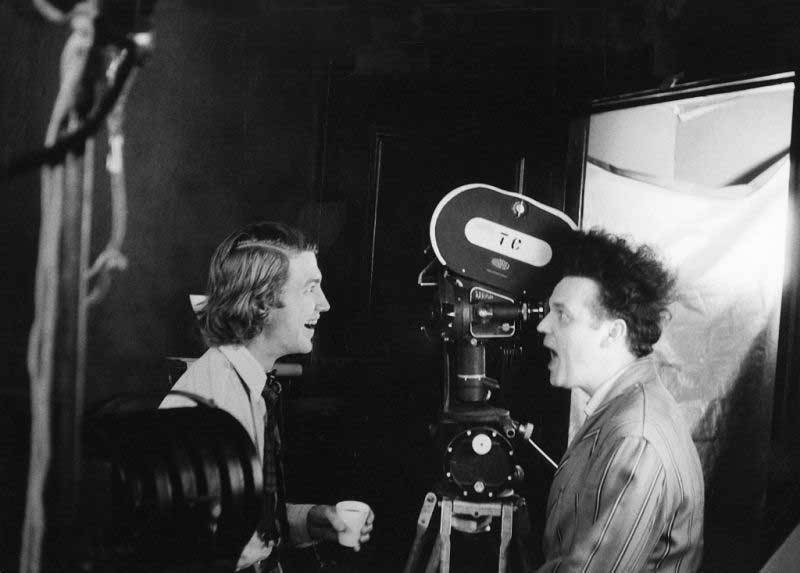The pilot episode of Twin Peaks opens with a seemingly ordinary high school scene: a girl sneaking a cigarette, a boy being summoned to the principal's office, and a teacher taking attendance. This tranquil setting is abruptly shattered when a police officer enters the classroom and whispers to the teacher. A scream pierces the air, and outside, a student is seen sprinting across the courtyard. The teacher struggles to hold back tears, anticipating an announcement. David Lynch then focuses the camera on an empty seat in the classroom, as two students exchange a knowing glance, realizing their friend Laura Palmer is dead.
Lynch was renowned for capturing the mundane aspects of life, yet he consistently peeled back these layers to reveal something unsettling beneath the surface. This scene from Twin Peaks epitomizes the thematic essence of his career, subtly yet powerfully. However, it's not the only defining moment in Lynch's vast body of work spanning over four decades in film, television, and art. Each Lynch fan might highlight a different scene as their definitive moment, reflecting the diverse appeal of his singular vision.
The term "Lynchian" encapsulates the unsettling, dream-like quality that has cemented Lynch's legendary status. His passing is a profound loss for fans, as he was an artist with a unique voice that resonated differently with each individual. "Lynchian" joins an elite group of adjectives like "Kafkaesque," which transcends the specifics of the work to describe a broader, more universal experience of unease and disorientation.
For budding film enthusiasts, watching Lynch's Eraserhead was a rite of passage. Decades later, one fan's teenage son embarked on this journey, even watching Twin Peaks with his girlfriend, reaching the Windom Earle arc of Season 2. Lynch's work has a timeless quality, exemplified by the nostalgic yet unsettling setting of a child's bedroom in Twin Peaks: The Return, designed as if from 1956—a nod to Lynch's own childhood.
The Return was released during Hollywood's nostalgia-driven revival, yet Lynch stayed true to his vision, leaving audiences bewildered by not bringing back key original characters in meaningful ways. This unorthodox approach was quintessentially Lynchian. Even when Lynch adhered to Hollywood norms, as with Dune, his unique touch was unmistakable, blending the legend of Paul Atreides with bizarre imagery that only he could conjure.
Lynch's The Elephant Man ventured close to mainstream acclaim, yet remained deeply moving and set in a disturbingly real historical context. This blend of beauty and disquiet is another hallmark of Lynch's style.
Attempting to categorize Lynch's work within traditional genres or tropes is futile, but his films are instantly recognizable. His obsession with uncovering a world beneath our own is evident in films like Blue Velvet, where a seemingly idyllic setting unravels into a dark, surreal underworld. Lynch's influences, including The Wizard of Oz, contribute to a unique cinematic language that continues to inspire.
Lynch's influence extends to contemporary filmmakers like Jane Schoenbrun, whose I Saw The TV Glow features scenes reminiscent of Lynch's work. Yorgos Lanthimos, Robert Eggers, Ari Aster, David Robert Mitchell, Emerald Fennell, Richard Kelly, Rose Glass, Quentin Tarantino, and Denis Villeneuve all draw from the Lynchian well, showcasing the enduring impact of his surreal, otherworldly style.
David Lynch's legacy marks the end of an era, yet his influence on future filmmakers will continue to be felt. As we look beneath the surface, we hope to uncover those "Lynchian" elements that he so masterfully revealed.
 David Lynch and Jack Nance on the set of Eraserhead.
David Lynch and Jack Nance on the set of Eraserhead.
 Home
Home  Navigation
Navigation






 Latest Articles
Latest Articles










 Latest Games
Latest Games




![Chubby Story [v1.4.2] (Localizations)](https://imgs.xddxz.com/uploads/85/1719638042667f981a5e9f8.jpg)

![Zia – New Version 0.4 [Studio Zia]](https://imgs.xddxz.com/uploads/47/1719569268667e8b74e6004.jpg)




